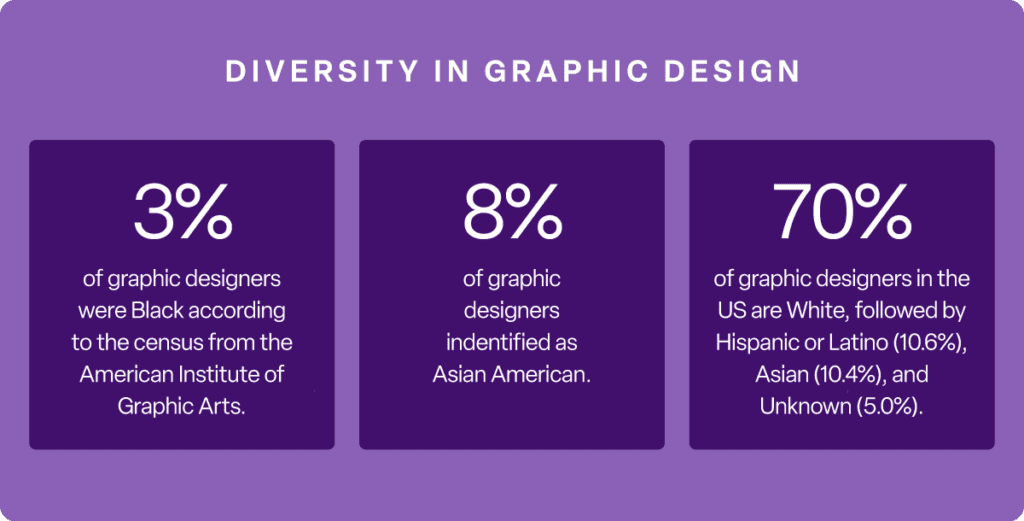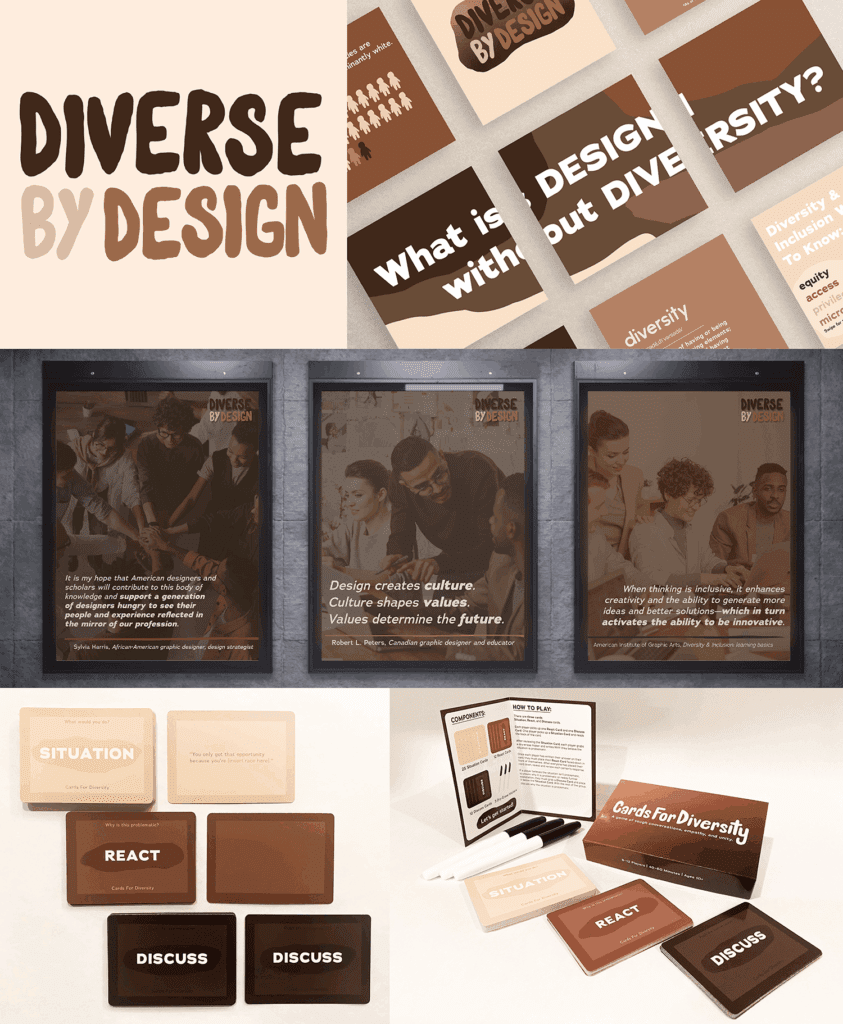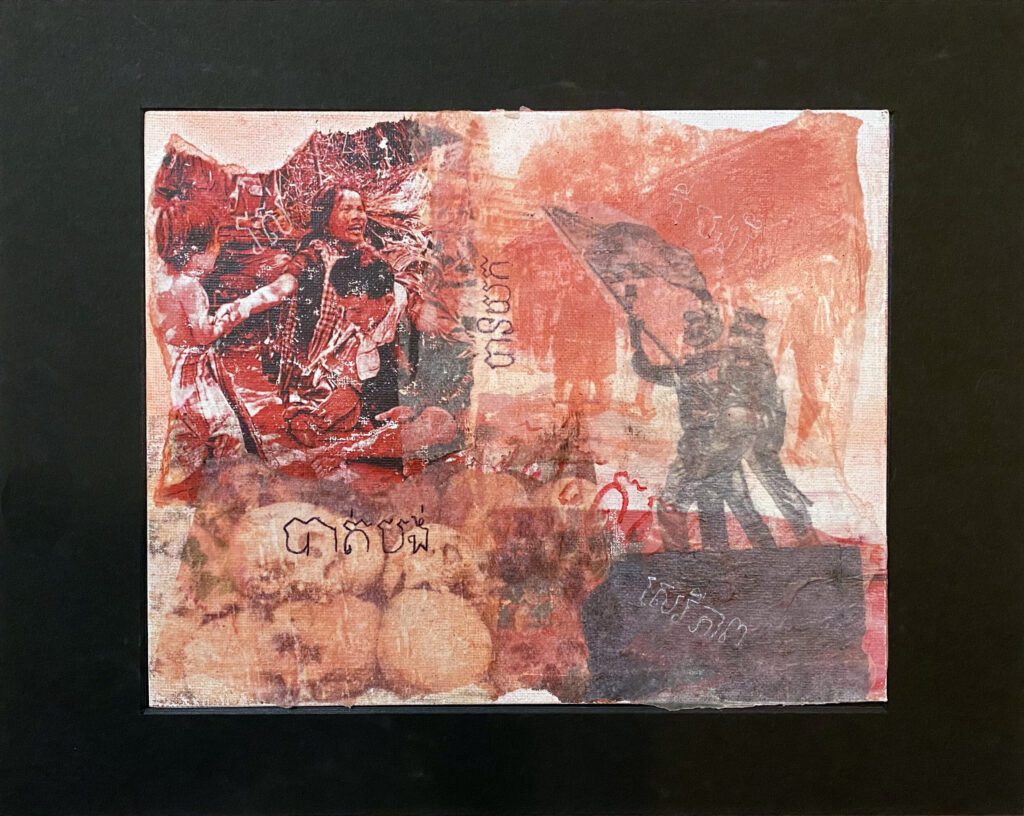How Maia Em is designing a more inclusive world

Bonterra creative designer II Maia Em developed an early love for art. Her childhood rendering of George Washington was impressive enough to warrant inclusion in the school art show. But when she attended a summer program at Chapel Hill, North Carolina, someone suggested her admission had only been because of affirmative action.
People of color and other minorities might be familiar with such microaggressions, but Maia decided she’d use the incident as motivation to spark change. Throughout her career, she’s championed for diverse representation in school, the workplace, and graphic design.
Maia, who’s Cambodian-Lao, understands the weight that her perspective carries. Only 8% of working graphic designers in the US identify as Asian American. “I would look at all these designers they would bring up in class and think ‘none of them look like me,’” Maia says. This sparked a desire to advocate for diverse and inclusive design and to help others do the same.

An inclination for art
Born in Maryland, Maia’s passion for the subject grew throughout her early years, and she fell in love with mixed media and graphic design in middle school. Her family moved to High Point, North Carolina when she was in her formative years. After high school, Maia relocated to attend the University of North Carolina at Charlotte. Despite the university town’s greater diversity, Maia slowly started to question the dominance of white designers in the curricula and in the world around her. “There are things you see in marketing that you think if they had at least one person of color on the design team, maybe they would have seen that some things are not a good move to make,” says Maia.

Spurred to do her part to improve diversity in the field, Maia focused her college senior thesis on exploring the subject further. She focused on the graphic designer community in Charlotte and found close to 90% of the community was white. Highlighting a lack of diversity in graphic design would be remiss if it did not mention the costs of the major. “Graphic design in general is an expensive major. You have to pay for an Adobe subscription and all your art supplies, which costs a lot of money,” Maia points out. Her thesis focused on inequal opportunities for students, and called out a professor for making students buy expensive mat boards. Her speaking out made a small but significant impact: The professor does not insist on the supplies anymore.
And as the world of art accelerates its partnerships with technology like AI, Maia knows it’s going to be important to not just have diverse representation in the room for graphic design teams but to also ensure diversity in algorithmic design and engineering. Doing so ensures there are multiple checkpoints for the end product, so it mirrors society more accurately and without bias.

Family matters
Maia is especially close to her family even if most of them might not be familiar with her work. The granddaughter of Cambodian and Lao immigrants, Maia appreciates the sacrifices her family had to endure to make it in America.
As part of her college portfolio, Maia created a triptych, a visual representation of her grandparents’ journey escaping the genocide executed by the Khmer Rouge. The first panel, The Life I Knew, depicts life on the family farm in Cambodia, the second, When Terror Struck, shows the dark years of genocide, with the final, New Beginnings, highlighting a new life in the US.
The enormous gratitude that Maia feels toward her family, reflects in a strong sense of responsibility. As anti-Asian hate spread in the wake of the COVID-19 pandemic, Maia realized her grandparents did not fully understand why people they knew were being targeted. “It’s kind of our job to be our advocates, to serve as translators for the elderly Asian community,” she says.
As for her work, Maia finds inspiration in the social impact work of Black designer Sylvia Harris. As creative director for the US Census Bureau, Harris’s accessible designs contributed to an uptick in census return rates. At Bonterra and in her extracurricular art work, Maia continues to prioritize inclusive design as a way to give back. She created a riff on the popular “Cards Against Humanity” game focused on microaggressions in the workplace.
“I wanted people to know how certain terms or phrases surrounding race can be seen as problematic or controversial,” says Maia. “You come with an open mind and allow yourself to be in others’ shoes.”
Work with Bonterra



